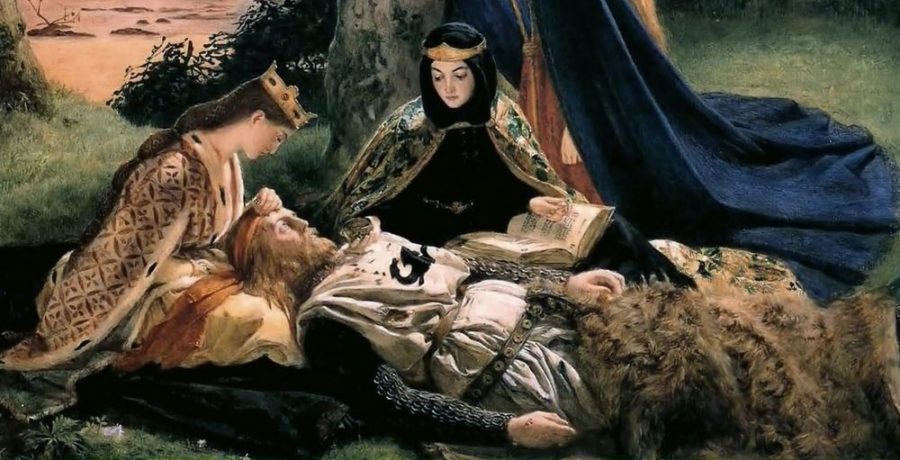Shiralkar: Arthurian lore is awe-inspiring ‘fan fiction’
April 11, 2020
Perhaps one of the more awe-inspiring stories of late King Arthur’s legend is one of my personal favorites. There’s just something very striking about heroes with swords, especially if the sword is a magical weapon called Excalibur, sunk in stone, waiting for its rightful owner to collect it and bring peace to the world.
If you decide, randomly one day, to dive deep into this mythical king’s life and death, you may stumble upon the fact that the rabbit hole is too branched-out, that there is no “canon” Arthurian legend. All of the lore has its origins in 12th and 13th-century Europe. There are several interpretations of the story, and they all come in different times in history. Therefore, there really is no single historically accurate narrative of the King’s adventures.
However, almost all interpretations of the lore agree on some key points. Moreover, it stands to reason that Arthur was actually based on a real king in England who was legitimately brave and handsome. In the legend, Arthur was the illegitimate son of Igraine, the wife of Gorlois of Cornwall, and the king of Britain, Uther Pendragon. Merlin, the wizard, masterminded the plan and made sure that Arthur grew up far away, in secret, only to return in time to claim his rightful place as king.
Other key characters remain consistent: Lancelot (who was added later on as a new character in the legend), along with other knights of the round table, Guinevere, King Arthur’s wife (who was the object of Lancelot’s adulterous affections), the other knights of the Round Table and so on. Even the swans of Lake Laverne on the Iowa State University campus, Lancelot and Elaine, are named after the parents of Sir Galahad, who also becomes a knight at the Round Table.
I’m greatly partial to another bit of Arthurian legend: the Holy Grail. The earliest mention of any text allotting such dense value to a mere vessel can be found in Chrétien de Troyes’s late 12th-century unfinished romance “Perceval: The Story of the Grail.” Later on, in the 13th century, Robert de Boron’s poem trilogy, “Merlin and the Grail: Joseph of Arimathea, Merlin, Perceval” manages to place the Grail at the Last Supper and later at the crucifixion, where Joseph collects the blood of Christ in the chalice. The Grail has since grown into a symbol of the highest level of achievement.
Given its strong characters and endearing narrative, it’s no wonder the mysticism of olden times has been such an integral part of popular culture and media. One of my earliest tangential connections with Arthurian lore is from the first time I watched “Indiana Jones and the Last Crusade” and was captivated by Grail lore. Then came the whole Dan Brown catalog, Monty Python films, Twain’s “A Connecticut Yankee in King Arthur’s Court,” all of that. John Boorman’s 1981 film “Excalibur” is supposedly the best adaptation of Arthurian legend to date. Guy Ritchie’s 2017 adaptation receives a lot of hate, but in my opinion, it’s one of the most fun action films of the past decade. Sadly, I cannot say the same about the newest Transformers movie, which also borrows from the lore.
For all the convincing subject matter it carries with it, it comes as kind of a shock to realize that a significant chunk of all Arthurian lore is just a collection of fan fiction pieces that evolved over the medieval years. But it’s also nice to think that maybe, just maybe, the real King Arthur is sound asleep somewhere in a mystic castle along one of those dreamy English moors, dreaming about electric sheep and a simpler life.







